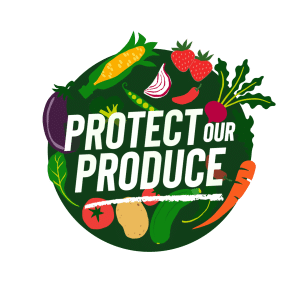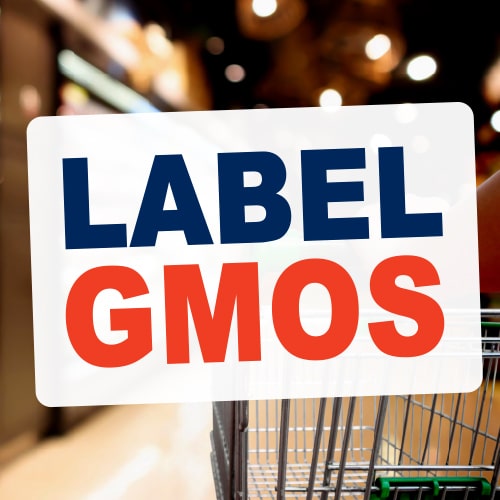Protect our Produce from New GMOs
Frequently Asked Questions
October 2025
 What are genetically modified organisms (GMOs)?
What are genetically modified organisms (GMOs)?
Genetically modified organisms (GMOs) are living organisms that have been genetically modified (genetically engineered) in the laboratory to have new characteristics. Genetic engineering directly changes the genetic makeup (DNA) of an organism, bypassing normal plant or animal reproduction. Genetic engineering includes techniques that make changes to DNA by inserting genetic material from the same, similar, or totally unrelated organisms and it includes gene editing techniques that can be used to delete genes. For more discussion, see GMO FAQs | CBAN.
What are new gene-edited GMOs?
New gene-edited GMOs are made with the new genetic engineering techniques called genome editing (gene editing) that include CRISPR. Gene editing techniques introduce genetic material that acts as an “editor” to change DNA. These techniques aim to insert, delete or otherwise change a DNA sequence at a specific, targeted site in the genome. (The genome is the entire set of genetic material in an organism, including DNA.) Gene editing can create GMOs that are not transgenic i.e. do not have DNA from other species.
What new GMOs could show up in grocery stores?
Bayer (formerly Monsanto) is preparing to sell GM gene-edited salad greens in the US and Canada (though their release has been delayed) and the company Simplot has announced its intention to bring GM gene-edited strawberries to the Canadian market as early as 2025. The GM greens are mustard greens that are gene edited to taste less mustardy, and the GM strawberries are gene edited to have multiple flowerings in a season, a trait that already exists due to traditional breeding methods (everbearing). The GM greens could appear in grocery store produce sections in packaged salad mixes, and the GM strawberries could appear as whole fresh strawberries, or in processed foods. These GM salad greens and GM strawberries would be the first vegetable and fruit made with gene editing (CRISPR) sold to consumers in Canada. Click here to read our report on Gene-Edited Fruits and Vegetables: The Threat of New GMOs in Canada, October 1st, 2025, and click here to read more in our No GMO Salad Update and Action Report, June 10, 2025.
Why do we need to act now to Protect our Produce from new GMOs?
- No labelling
There is no mandatory labelling of genetically modified foods in Canada despite intensive public campaigning and over 20 years of polling that consistently shows over 80% of people living in Canada want these labels. In addition, many new gene-edited GMOs can be put on the market without even notifying the government. Sign the Parliamentary e-petition for mandatory labelling of GM foods in Canada here. - No government safety assessments
The Canadian government has removed regulation for most gene edited plants and foods. This means that many gene edited foods, such as Bayer’s GM salad greens, can enter our food system and environment without any government safety assessments or independent science. There is no government approval process and no government oversight for these new GMOs. Corporations can assess the safety of their own products. - A threat to food sovereignty, biodiversity and farmers
New genetically modified fruits and vegetables mean increased corporate control over seed varieties. Six companies now control 56% of the global commercial seed market. GM seeds put non-GMO plants at risk of contamination, threatening the tradition of seed-saving and the preservation of heritage seeds. GM contamination also threatens organic farmers’ livelihoods because organics prohibits the use of GMOs.
What action can I take to Protect our Produce from new GMOs?
You can advocate for a Non-GMO Produce Section at your grocery store. Your voice as a customer is the most powerful voice to influence store policy. Demand that your grocery store pledge to carry only non-GMO fruits and vegetables.
Write to the head office of your grocery store:
Food sales in Canada are dominated by a few big grocery chains. Demand that your grocery store pledge to carry only non-GMO fruits and vegetables. Send a short email to tell them that you do not want to eat GMO fruits and vegetables and you want the store to commit to a non-GMO produce section to make it easy for you to choose.





